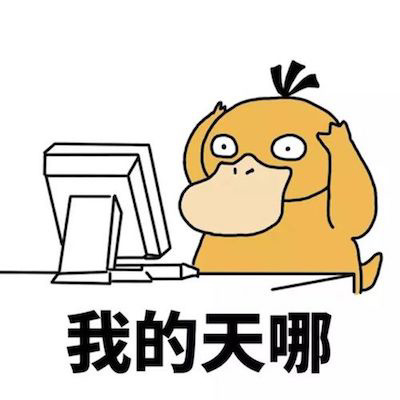背景
今天做了一个功能,注册一个监听wifi连接的广播,连接后显示一个悬浮Textview,并在外面设置一个Button,用户点击后可以传递一些内容给这个悬浮Textview来显示,一切都是那么顺利,可等到运行的时候出错了:
android.view.ViewRootImpl$CalledFromWrongThreadException: Only the original thread that created a view hierarchy can touch its views.
at android.view.ViewRootImpl.checkThread(ViewRootImpl.java:6891)
at android.view.ViewRootImpl.invalidateChildInParent(ViewRootImpl.java:1083)
at android.view.ViewGroup.invalidateChild(ViewGroup.java:5205)
at android.view.View.invalidateInternal(View.java:13656)
at android.view.View.invalidate(View.java:13620)
at android.view.View.invalidate(View.java:13604)
at android.widget.TextView.checkForRelayout(TextView.java:7347)
at android.widget.TextView.setText(TextView.java:4480)
at android.widget.TextView.setText(TextView.java:4337)
at android.widget.TextView.setText(TextView.java:4312)
at com.renny.demo.view.activity.HomeActivity$onCreate$1.onClick(HomeActivity.kt:57)
HomeActivity是我发送数据的地方。
这个错误在我刚入门Android的时候遇到过几次,现在已经很熟悉了,于是我花了1.25秒就想出了了问题所在,我肯定是在子线程更新view了。嗯,虽然看了下代码没看出来这个子线程是哪个,但机智的我还是不管三七二十一,直接用handler抛到了主线程:
new Handler(Looper.getMainLooper()).post(new Runnable() {
@Override
public void run() {
mTextviw.setText("hello");
}
});
无奈,问题依旧,看来事情并不简单。

分析
根据错误信息里的提示,先来介绍下ViewRootImpl,当它创建的时候,创建它的Thread会赋值给mThread成员变量。
public ViewRootImpl(Context context, Display display) {
mContext = context;
mWindowSession = WindowManagerGlobal.getWindowSession();
mDisplay = display;
mBasePackageName = context.getBasePackageName();
mThread = Thread.currentThread();
当我们给TextView设置文本内容的时候,会判断mLayout是否为空,如果不会空,则会调用checkForRelayout()方法。
private void setText(CharSequence text, BufferType type,boolean notifyBefore, int oldlen) {
// ......
if (mLayout != null) {
checkForRelayout();
}
// ......
}
这个mLayout先不用管,在第一次onMeasure的时候会赋值,现在Textview已经先显示,所以此时不为空。随后在checkForRelayout()中会调用
private void checkForRelayout() {
if (...) {
requestLayout();
invalidate();
} else {
nullLayouts();
requestLayout();
invalidate();
}
}
然后当View(或者是ViewGroup)调用invalidate()方法的时候,会调用父View的invalidateChild(View child, final Rect dirty),这里面有一个do while循环,每循环一次会调用parent = parent.invalidateChildInParent(location, dirty),直到到最外面的View节点。
当遍历到根节点,也就是ViewRoot,调用ViewRoot的invalidateChildInParent方法,实际是调用ViewRoot的实现类ViewRootImpl身上的invalidateChildInParent方法。
当ViewGroup中的invalidateChild(View child, final Rect dirty)方法循环到最外层的时候,这个mParent就是ViewRootImpl。
当调用到ViewRootImpl的invalidateChildInParent(int[] location, Rect dirty)方法的时候会去检测线程,也就是checkThread()。
checkThread()里面会判断当前线程是不是创建ViewRootImpl的那个线程,如果不是的就抛出异常。
void checkThread() {
if (mThread != Thread.currentThread()) {
throw new CalledFromWrongThreadException(
"Only the original thread that created a view hierarchy can touch its views.");
}
}
所以只要看到ViewRootImpl创建的线程是不是主线程就行了。添加悬浮窗的过程中会创建ViewRootImpl:
val windowManager = getSystemService(Context.WINDOW_SERVICE) as WindowManager
val lp = WindowManager.LayoutParams().apply {
type = WindowManager.LayoutParams.TYPE_SYSTEM_ALERT or WindowManager.LayoutParams.TYPE_SYSTEM_OVERLAY
gravity = Gravity.LEFT or Gravity.TOP
}
textView = TextView(applicationContext)
windowManager.addView(textView, lp)
在addView方法中创建:
public void addView(View view, LayoutParams params) {
//...
root = new ViewRootImpl(view.getContext(), display);
view.setLayoutParams(wparams);
this.mViews.add(view);
this.mRoots.add(root);
this.mParams.add(wparams);
}
最后加了下打印线程信息,居然发现创建这个悬浮窗的线程不是主线程。。。就是因为注册广播的时候:
mContext.registerReceiver(mReceiver, mFilter, null, mWorkHandler)
所以onReceive会在我指定的线程回调。
结论
view只能在UI线程更新没错,但UI线程不一定等于主线程,而是创建ViewRootImpl所在的线程,更准确的说是windowManager添加rootview所在的线程,当在子线程添加View时,这个子线程就是这个view和子view(如果有)所在的UI线程,我们也就不能在另外的线程更新view了,包括主线程。最后,对于这个UI线程要求就是一定要开启loop循环:
thread {
Looper.prepare()
val windowManager = getSystemService(Context.WINDOW_SERVICE) as WindowManager
val lp = WindowManager.LayoutParams().apply {
type = WindowManager.LayoutParams.TYPE_SYSTEM_ALERT or WindowManager.LayoutParams.TYPE_SYSTEM_OVERLAY
gravity = Gravity.LEFT or Gravity.TOP
}
textView = TextView(applicationContext)
windowManager.addView(textView, lp)
Looper.loop()
}
参考
Only the original thread that created a view hierarchy can touch its views. 是怎么产生的